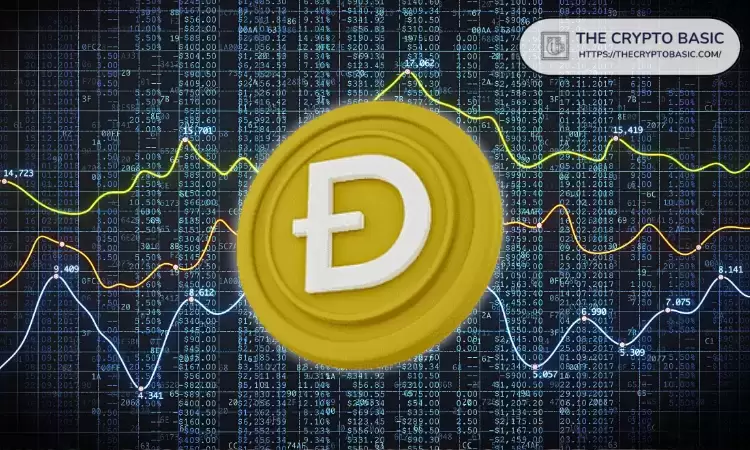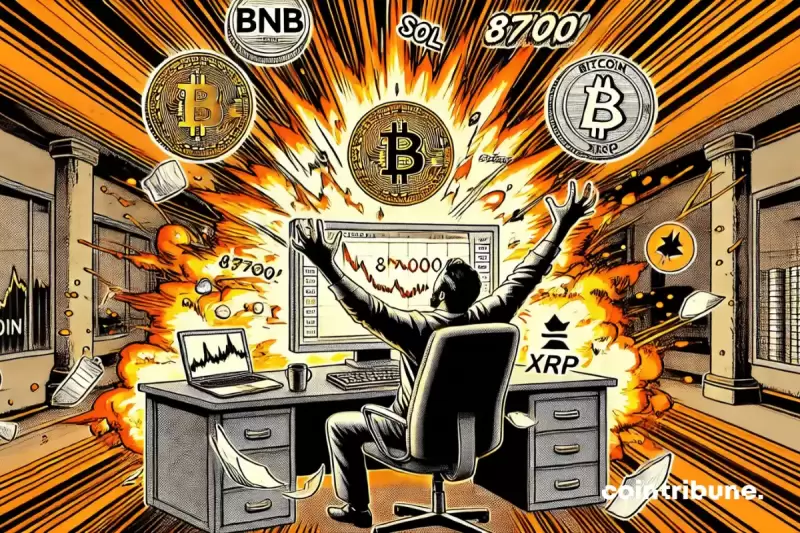 |
|
 |
|
 |
|
 |
|
 |
|
 |
|
 |
|
 |
|
 |
|
 |
|
 |
|
 |
|
 |
|
 |
|
 |
|
SUIは、従来のアカウントベースのトランザクション設計から離れるオブジェクトベースのモデルで、ブロックチェーンアーキテクチャを再考しようとしています。

Sui (pronounced “swee”) is a Layer 1 blockchain that boasts high transaction throughput and the ability to handle demanding applications without encountering the usual bottlenecks. Developed by Mysten Labs, Sui is designed to push the boundaries of blockchain technology with its innovative architecture and use of the Move programming language. The goal is not just to achieve theoretical scalability but to demonstrate that blockchain performance can keep pace with real-world demand.
SUI(「SWEE」と発音)は、高いトランザクションスループットと通常のボトルネックに遭遇することなく、厳しいアプリケーションを処理する能力を誇るレイヤー1ブロックチェーンです。 Mysten Labsによって開発されたSUIは、革新的なアーキテクチャとMoveプログラミング言語の使用により、ブロックチェーンテクノロジーの境界を押し広げるように設計されています。目標は、理論的なスケーラビリティを達成することだけでなく、ブロックチェーンのパフォーマンスが実際の需要に対応できることを実証することです。
The team behind Mysten Labs is composed of ex-engineers from Meta’s now-defunct Diem blockchain initiative. CTO Sam Blackshear created Move, while CEO Evan Cheng led engineering teams at Meta and Apple. CPO Adeniyi Abiodun worked on Novi, Meta’s crypto wallet. This background gives Sui an institutional pedigree, but it also places pressure on the project to prove that it is more than just another overhyped corporate-backed experiment.
Mysten Labsの背後にあるチームは、Metaの現在廃止されたDiem BlockchainイニシアチブのEx-Engineersで構成されています。 CTO Sam BlackshearはMoveを作成し、CEOのEvan ChengはMetaとAppleのエンジニアリングチームを率いました。 CPO Adeniyi Abiodunは、メタの暗号ウォレットであるNoviに取り組みました。この背景は、SUIに制度的な血統を与えますが、それはまた、プロジェクトに単なる誇張された企業支援の実験以上のものであることを証明するためにプロジェクトに圧力をかけます。
Sui has attracted serious investment, with $336 million raised from firms like Andreessen Horowitz (a16z), FTX Ventures, Jump Crypto, Binance Labs, and Coinbase Ventures. This puts Sui in the same funding league as Ethereum and Solana in their early days, with backers betting on Sui’s infrastructure to support high-frequency financial and gaming applications.
SUIは深刻な投資を集めており、Andreessen Horowitz(A16Z)、FTX Ventures、Jump Crypto、Binance Labs、Coinbase Venturesなどの企業から3億3,600万ドルが調達されました。これにより、SUIは初期の頃にイーサリアムやソラナと同じ資金調達リーグになり、支援者はSUIのインフラストラクチャに賭けて、高周波の金融およびゲームアプリケーションをサポートしています。
Launched in May 2023, Sui quickly built momentum, with over $1 billion in total value locked (TVL) by 2024. With zero reported network outages and an architecture designed for high-speed execution, Sui is positioning itself as a competitor to Solana.
2023年5月に発売されたSUIは、2024年までに10億ドルを超える合計値がロックされた総額(TVL)を獲得し、Zeroが報告されたネットワークの停止と高速実行のために設計されたアーキテクチャを備えた勢いをすぐに構築しました。
But the real question is whether Sui can sustain adoption beyond the initial surge of speculation. Competition is fierce. Solana dominates the high-performance Layer 1 category, and Aptos—another blockchain built by ex-Meta engineers using Move—offers a similar pitch.
しかし、本当の問題は、SUIが推測の最初の急増を超えて採用を維持できるかどうかです。競争は激しいです。 Solanaは高性能レイヤー1カテゴリを支配しており、Aptos(Moveを使用して元メタエンジニアが構築した別のブロックチェーン)が同様のピッチを開きます。
Whether Sui can differentiate itself over the long term will depend on developer traction, security resilience, and actual user adoption rather than just hype cycles.
SUIが長期にわたって自分自身を区別できるかどうかは、単なる誇大広告サイクルではなく、開発者の牽引力、セキュリティの回復力、および実際のユーザーの採用に依存します。
Let’s explore how Sui works and what the $SUI token is used for.
SUIの仕組みと、$ SUIトークンがどのように使用されているかを調べてみましょう。
Sui’s Technical Architecture & Innovation
SUIの技術アーキテクチャとイノベーション
Sui’s defining feature is its parallel execution model, which aims to eliminate the congestion that plagues blockchains operating sequentially. Instead of processing transactions in a linear block structure, Sui’s object-centric approach allows independent transactions to finalize simultaneously. This sounds great in theory, but in practice, efficiency boils down to real-world developer implementation and network conditions.
SUIの決定的な機能は、並列実行モデルです。これは、順次動作するブロックチェーンを悩ませる輻輳を排除することを目的としています。 SUIのオブジェクト中心のアプローチにより、線形ブロック構造でトランザクションを処理する代わりに、独立したトランザクションが同時に最終化することができます。これは理論的には素晴らしいように聞こえますが、実際には、効率性は実際の開発者の実装とネットワーク条件に要約されます。
The blockchain runs on a Delegated Proof-of-Stake (DPoS) system, incorporating a Directed Acyclic Graph (DAG) to streamline data flow. Validators—who confirm transactions—are selected based on staked SUI tokens. This boosts throughput while maintaining decentralization, though like all DPoS models, there’s an ever-present risk of validator centralization if staking power concentrates in a few hands.
ブロックチェーンは、委任されたプルーフオブステーク(DPOS)システムで実行され、データフローを合理化するために向けられた非環式グラフ(DAG)を組み込んでいます。トランザクションを確認するバリデーターは、Sui Tokensに基づいて選択されます。これにより、地方分権化を維持しながらスループットが向上しますが、すべてのDPOSモデルと同様に、ステーキングパワーがいくつかの手に集中する場合、有効化された集中化のリスクが常にあります。
Another advantage of Sui is its use of the Move programming language. Originally built for Meta’s Diem, Move is designed to reduce security risks in smart contracts. Its resource-oriented approach prevents asset duplication or unintended loss—critical for financial transactions and NFTs—making it a potential upgrade over Solidity.
SUIのもう1つの利点は、Moveプログラミング言語の使用です。もともとMetaのDiem用に構築されたMoveは、スマートコントラクトのセキュリティリスクを減らすように設計されています。そのリソース指向のアプローチは、資産の重複または意図しない損失(金融取引やNFTSのために重要な損失)を防ぎます。
However, Move’s adoption still trails far behind Ethereum’s Solidity, meaning developer migration isn’t guaranteed.
ただし、Moveの採用は依然としてEthereumの堅実さをはるかに上回っています。つまり、開発者の移行は保証されていません。
Another key component of Sui’s architecture is the Narwhal and Bullshark consensus mechanism. Narwhal acts as a mempool, ensuring smooth transaction batching, while Bullshark handles sequencing within the DAG. This setup theoretically enables 125,000 transactions per second (TPS) under ideal conditions—but “ideal” and “real-world” are two very different things. Until Sui undergoes stress tests at scale, these numbers remain optimistic.
SUIの建築のもう1つの重要な要素は、NarwhalとBullsharkのコンセンサスメカニズムです。 NarwhalはMempoolとして機能し、スムーズなトランザクションバッチを確保し、BullsharkはDAG内のシーケンスを処理します。このセットアップは、理論的には理想的な条件下で1秒あたり125,000トランザクション(TPS)を可能にしますが、「理想」と「実世界」は非常に異なるものです。 SUIが大規模にストレステストを受けるまで、これらの数字は楽観的なままです。
Beyond speed, Sui addresses data storage costs, a growing problem for blockchain validators. The Storage Fund introduces an upfront payment model where users cover the cost of storing their transactions. This reduces the long-term validator burden, but it’s still unclear if the economics will hold up as transaction volume scales.
SUIは、速度を超えてデータストレージコストに対処します。これは、ブロックチェーンバリデーターの問題の増加です。ストレージファンドは、ユーザーが取引を保存するコストをカバーする前払いの支払いモデルを導入します。これにより、長期的なバリデーターの負担が軽減されますが、経済学がトランザクションボリュームスケールとして維持されるかどうかはまだ不明です。
$SUI’s Tokenomics
$ suiのトコノミクス
Sui’s native token, $SUI, underpins the network. With a fixed supply of 10 billion tokens, distribution is structured to prevent inflation spikes while sustaining long-term liquidity. As of early 2025, around 3.1 billion tokens were in circulation, with more unlocking gradually through 2030.
SUIのネイティブトークン、$ SUIは、ネットワークを支えています。 100億トークンの固定供給により、分布は、長期の流動性を維持しながらインフレスパイクを防ぐために構成されています。 2025年初頭の時点で、約31億トークンが流通しており、2030年まで徐々にロック解除されています。
This staged release model prevents sudden price crashes, but investor behavior around major unlocks is notoriously unpredictable.
この段階的リリースモデルは突然の価格のクラッシュを防ぎますが、主要なロック解除に関する投資家の行動は予測不可能であることで有名です。
The token’s primary functions include:
トークンの主要な機能には次のものがあります。
- Governance: $SUI holders can participate in on-chain governance to influence protocol decisions, such as parameter adjustments and upgrades.
- ガバナンス:$ SUI所有者は、パラメーターの調整やアップグレードなどのプロトコルの決定に影響を与えるために、オンチェーンガバナンスに参加できます。
- Staking: Users can stake their $SUI tokens with validators to contribute to the network’s security and earn rewards in proportion to their stake.
- ステーキング:ユーザーは、$ suiトークンをバリデーターで賭けてネットワークのセキュリティに貢献し、利害関係に比例して報酬を獲得できます。
- Transaction Fees: Every transaction on the Sui network incurs a fee, which is paid in $SUI and used to compensate validators for their efforts.
- 取引手数料:SUIネットワーク上のすべての取引には、$ SUIで支払われ、バリッターがその努力を補償するために使用される料金がかかります。
- Accessing DApps: DApps
- Dappsへのアクセス:Dapps
免責事項:info@kdj.com
提供される情報は取引に関するアドバイスではありません。 kdj.com は、この記事で提供される情報に基づいて行われた投資に対して一切の責任を負いません。暗号通貨は変動性が高いため、十分な調査を行った上で慎重に投資することを強くお勧めします。
このウェブサイトで使用されているコンテンツが著作権を侵害していると思われる場合は、直ちに当社 (info@kdj.com) までご連絡ください。速やかに削除させていただきます。



























































